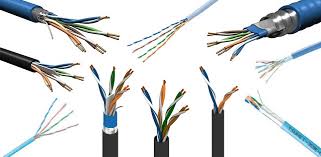
In today’s ever-changing technological world, electrical cablestechnology has made huge strides in adapting to the demands of modern-day homes. The integration of cutting-edge materials, enhanced safety features, as well as smarter designs are revolutionizing the way electrical systems are installed and maintained. These advances address the need to improve efficiency, safety and flexibility in home wiring.
One of the major developments is the development of high-performance, low-voltage cables specifically designed to take on the increased demands from homes with automation. Modern homes are equipped with a variety of smart devices ranging from security cameras to energy management systems, all needing reliable and efficient wiring. Technologies like twisted-pair cables and fiber optics have become commonplace, offering high-speed data transmission and reducing signal interference. These cables do not only provide better and faster internet connectivity, but also enhance the performance of smart home networks.
Safety is the most important factor in the field of electrical cable technology. Recent developments include the use of fire-resistant materials and improved methods of insulation. For example, cables with advanced flame-retardant coatings can help stop the spread of fire. Likewise, materials such as cross-linked Polyethylene (XLPE) have better electrical and thermal performance. Additionally, self-extinguishing cables are becoming more common and enhancing security by reducing the chance that electrical fires can cause.
Flexibility and ease of installation have also seen notable improvement. Modern cables are designed to be more flexible and easier to install, which reduces the amount of time needed to install them and also labor costs. The latest models of conduit systems as well as modular wiring solutions simplify the procedure of relocating or adding electrical outlets, which makes home renovations easier to handle.
Another major trend is the rise of eco-friendly cables. Manufacturers are now producing cables that are made from recycled materials and have lower environmental footprint. These new technologies not only meet stringent regulatory requirements but also cater to the increasing demand for green construction practices.
In short, the advancements in electric cables have led to greater efficiency in safety, sustainability, and security in modern homes. As intelligent home systems and environmental issues continue to evolve the industry of electrical cables will surely continue to invent to meet these challenges and improve how we live our lives.

